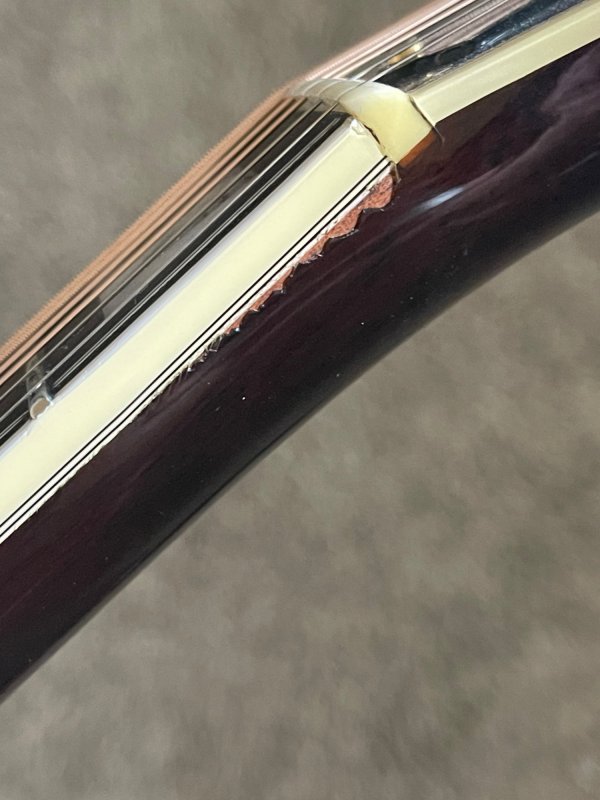Wow! Unbelievable input and thank you all for investing time to help sort this out.
Aw shucks, it's just what we do 'round here.

It's our hobby. Also we keep finding out new stuff, even I still do after so many years. Guilds seem to have actually been in an almost constant state of evolution since day one. From little things to bigger ones like changing the wood formula of a model of a model, and surprise nut widths..let alone the model name changes for the same basic build...


I still keep gettin' surprised. It's the
real mystique of the brand.

The guitar plays and sounds amazing and I am not sure I could leave it with a luthier given I am having so much fun with it...
Thanks again all!!
I get that. Play it until it needs a fret job and then get it handled.
Oh it occurs to me you may want to get the small exposed wood area sealed. Over time your finger oils will soak in and discolor the area, and
might make it a
little troublesome for new lacquer to adhere.
My hack, have used it to drop-fill some bare spots in the top of my D25:
Sally Hansens Hard as Nails nail polish.
Note first 3 ingredients are NCL solvents and 4th ingredient is nitrocellulose so it's actually an NCL lacquer itself, so will blend onto those chips by the nut. Not as durable as the Westerly stuff, but won't harm it.
In my case, the little brush was the perfect size for drop-filling small worn areas along the grain lines, just below the fretboard extension. I frequently prop a fingertip or 2 there while fingerpicking (even strumming sometimes) right over the fretboard, which I do a lot.

So yeah it's needed "refilling" a couple of times over the years, but at $3.00 a bottle, it's a lifetime supply, right? Until you're ready to finally let her go the luthier for a bit.


